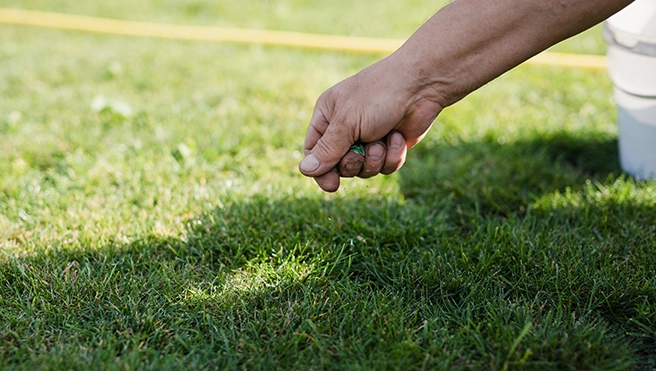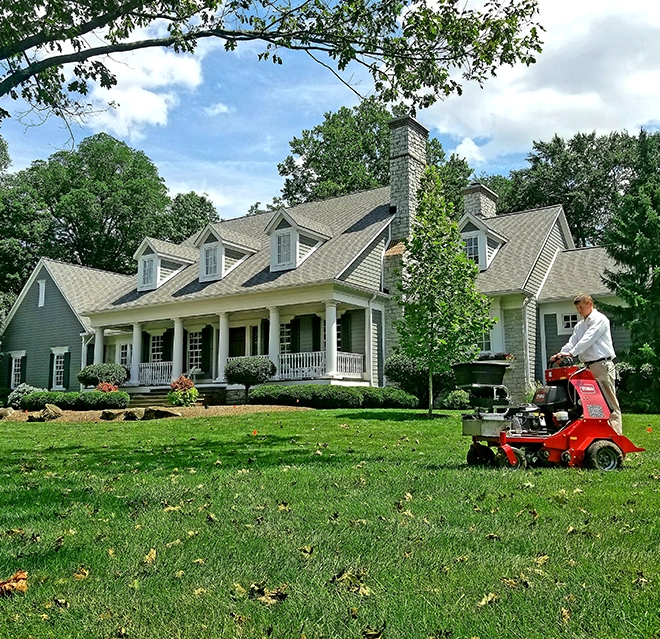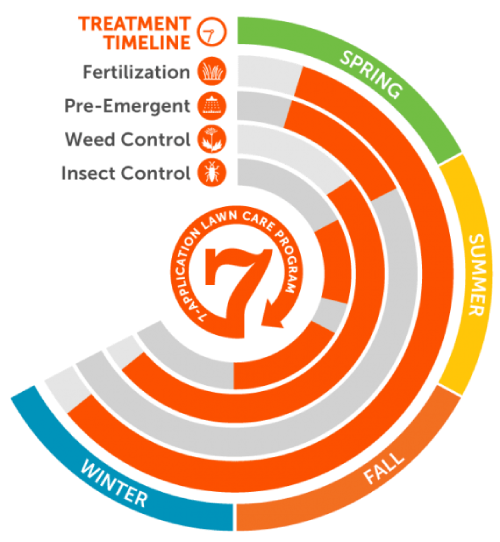Central Indiana weather can be crazy. Sometimes it seems like we can go through multiple seasons in the span of just a week. This is not only stressful for us, but it can be stressful on plants as well. That's why it is important to replenish the nutrients our lawns need to help maintain color, density, and vitality in our lawns. When a lawn is healthy, it can hold up to the stresses of drought and heat better.
Fertilizer is food for your lawn and is made up of three components: nitrogen, phosphorus, and potassium.
Fertilizer can be applied in either a liquid or a granular application. Weather can change dramatically, so it is important to choose the proper fertilizer for your lawn as well as follow the recommended application rates and watering instructions.



